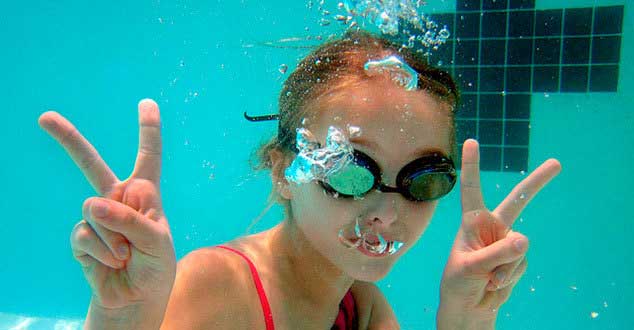
When it comes to pool safety at home, ensuring a secure and child-friendly environment is of utmost importance. Accidental drownings and water-related incidents can be prevented by implementing essential safety measures and educating children about water safety rules. In this article, we will guide parents on creating a safe pool environment for kids, including the installation of pool fencing, and alarms, and teaching children fundamental water safety practices. By prioritizing pool safety, we can enjoy the benefits of having a pool while providing peace of mind for parents and a fun, worry-free experience for children.
Pool Fencing: Your First Line of Defense
One crucial element of pool safety at home is the installation of proper pool fencing. A secure fence acts as a physical barrier, preventing unauthorized access to the pool area. Consider the following guidelines when selecting and installing pool fencing:
- Height and Material: Choose a fence that is at least four feet high to deter children from climbing over it. Opt for materials like wrought iron, aluminum, or mesh that are difficult to climb and provide clear visibility of the pool area.
- Self-Latching Gate: Install a self-latching gate that automatically closes and latches securely. The latch should be out of reach of young children, ensuring they cannot open the gate on their own.
- Clearance: Ensure there is no significant gap between the bottom of the fence and the ground. This prevents small children or pets from crawling under the fence.
- Regular Maintenance: Inspect the fence regularly to identify any damage or wear. Repair or replace any broken parts promptly to maintain the integrity of the fence.
Remember, pool fencing is not a substitute for supervision, but rather an additional layer of protection. Always keep a watchful eye on children around the pool area, regardless of the presence of a fence.
Alarms and Safety Devices
In addition to pool fencing, the use of alarms and safety devices adds an extra level of protection. Consider the following options:
- Pool Alarm: Install a pool alarm system that detects motion or disturbances in the water. This type of alarm alerts you when someone enters the pool unexpectedly, providing an early warning system.
- Door and Window Alarms: Install alarms on doors and windows that lead to the pool area. These alarms will sound when the door or window is opened, alerting you to potential access to the pool.
- Pool Covers: Invest in a sturdy and properly fitting pool cover that can be securely fastened. This acts as a physical barrier, preventing accidental falls into the pool. Ensure the pool cover is designed for safety and can support the weight of a child.
- Swimming Pool Safety Nets: Safety nets are another option for added protection. They are placed over the pool, creating a barrier that prevents children from falling into the water. Make sure the safety net is properly installed and secured.
Remember, safety devices should be used in conjunction with adult supervision. These tools are meant to assist in preventing accidents, but they should not replace vigilant monitoring.
Teaching Water Safety Rules to Children
Aside from physical safety measures, educating children about water safety is vital for their well-being. Teach your kids the following essential water safety rules:
- Never Swim Alone: Emphasize the importance of swimming with a buddy or under adult supervision. Encourage them to always have a swimming companion, even if they are confident swimmers.
- No Running or Pushing: Teach children to walk carefully around the pool area to avoid slips and falls. Discourage any pushing or rough play near the water to prevent accidents.
- Stay Away from Pool Drains: Instruct children to avoid pool drains and suction outlets, as they can create a strong suction that poses a risk of entrapment. Teach them to stay away from these areas and inform an adult if they notice any loose or broken drain covers.
- No Diving in Shallow Water: Explain the importance of diving only in designated deep areas of the pool. Diving into shallow water can lead to serious head and neck injuries. Encourage them to always check the water depth before diving.
- Learn to Float and Swim: Enroll your child in swimming lessons to learn essential swimming skills, including floating and basic strokes. These skills will not only enhance their safety but also build their confidence in the water.
- Know Emergency Procedures: Teach children how to respond in case of an emergency. Make sure they understand the importance of calling for help and providing accurate information about their location.
By teaching these water safety rules and consistently reinforcing them, children will develop a strong understanding of how to stay safe in and around the pool.
Frequently Asked Questions
Q: How can I make my pool area more child-friendly?
A: There are several steps you can take to make your pool area safer for children. Install pool fencing, use self-latching gates, secure doors and windows with alarms, and remove any potential hazards or obstacles near the pool.
Q: At what age can I start teaching my child to swim?
A: It’s never too early to introduce your child to water and swimming. Parent-child swimming classes are available for infants as young as six months. Consult with a swim instructor to determine the most appropriate age to begin formal swimming lessons.
Q: How often should I supervise my child when they’re swimming?
A: Constant adult supervision is crucial when children are in or near the pool. It’s recommended to have a designated “water watcher” who focuses solely on supervising the swimmers and avoids distractions.
Q: Are inflatable pool toys safe for children?
A: While inflatable pool toys can be fun, it’s important to supervise children closely when they are using them. Ensure the toys are age-appropriate, properly inflated, and never leave children unattended with inflatable toys.
Q: Can SwimRightAcademy provide further guidance on pool safety?
A: SwimRightAcademy is a leading provider of swim lessons and water safety education. They offer expert guidance on pool safety measures and can assist you in creating a safe environment for your children. Visit their website for more information.
Final words
Creating a safe pool environment at home is crucial to prevent accidents and promote the well-being of children. By implementing pool fencing, using alarms and safety devices, and teaching children essential water safety rules, parents can ensure a secure and enjoyable swimming experience for their kids. Remember, adult supervision is paramount, and safety measures should always be accompanied by vigilance. Let’s make pool safety a priority and create a worry-free environment where children can splash, play, and swim with confidence.


